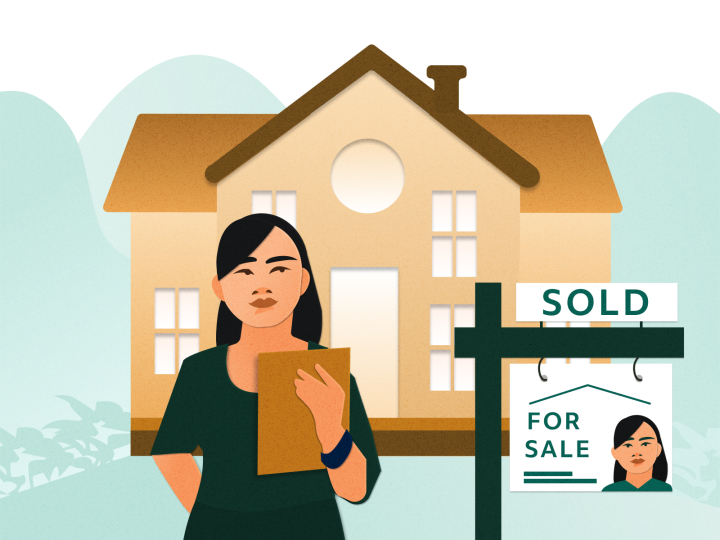The Future of Real Estate Lockhart: Trends You Need to Know
The Future of Real Estate Lockhart: Trends You Need to Know
Blog Article
The Future of Real Estate: Patterns and Opportunities to See
As the actual estate landscape progresses, it becomes increasingly crucial to comprehend the arising fads and possibilities that will certainly define the market in the coming years. With these characteristics at play, a closer exam of the strategies and adjustments essential for success discloses appealing possibilities that can improve investment approaches and market actions.
Technological Innovations in Property
In recent years, the real estate field has actually embraced a wave of technological developments that are transforming conventional practices. One of the most significant innovations is the surge of large data analytics, which enables real estate professionals to examine market fads, forecast residential property values, and identify investment opportunities with unmatched precision.
Additionally, digital reality (VIRTUAL REALITY) and increased fact (AR) modern technologies are transforming property marketing by offering immersive experiences for prospective customers and occupants. These devices enable clients to conduct virtual tours of homes, therefore simplifying the search procedure and boosting customer engagement. Blockchain modern technology is gaining grip as a means to secure purchases and preserve clear documents, therefore minimizing fraud and quickening the closing procedure.
Smart home innovations are also becoming increasingly prevalent, enabling homeowners to monitor and manage their residential or commercial properties from another location (Real Estate Lockhart). Collectively, these technological advancements are improving the landscape of genuine estate, fostering an extra reliable, transparent, and customer-centric industry
Need for Lasting Qualities
As consumers increasingly focus on ecological responsibility, the need for lasting homes has risen in the property market. This shift reflects a broader societal pattern toward sustainability, with property buyers and financiers seeking properties that minimize eco-friendly impact while maximizing power effectiveness. Attributes such as solar panels, energy-efficient home appliances, and sustainable structure products are currently viewed as important instead of optional.

In addition, the increase of green communities, which focus on walkability and accessibility to public transport, better emphasizes this pattern. These advancements appeal to eco mindful purchasers and promote a much healthier way of living.
As the need for sustainable residential or commercial properties remains to increase, industry stakeholders need to adapt to these assumptions. By focusing on and accepting cutting-edge methods sustainability, the realty market can not only satisfy customer need however also add to a much more sustainable future.
Changing Customer Demographics

Additionally, the maturing populace is reshaping need for real estate. Child boomers are seeking downsized residences that offer availability and reduced maintenance, frequently favoring city settings with close-by features. This change necessitates an emphasis on multi-generational housing solutions that fit differing requirements.
Moreover, cultural diversity is playing a crucial function in property patterns. Buyers from different histories bring distinctive Look At This choices and expectations, prompting developers to produce inclusive atmospheres that satisfy a wider audience. As these demographic shifts remain to evolve, real estate specialists have to adjust their techniques to attend to the demands of these different customers. Comprehending these altering demographics will be crucial in determining arising opportunities and crafting tailored marketing strategies that reverberate with the diverse needs of today's market.
Increase of Remote Work Influence
Increasingly, the rise of remote work is changing the actual estate landscape, triggering considerable changes in buyer choices and place choices. As employees appreciate the versatility of functioning from home, many are reassessing their residential requirements, bring about a surge sought after for buildings in rural and country locations. This trend is mostly driven by the wish for more sizable living atmospheres that can fit home workplaces and a much better high quality of life.
Moreover, city facilities, when the focal factor for customers, are experiencing a steady decrease in demand as people prioritize price and access to nature. Genuine estate programmers and capitalists are moving their emphasis toward buildings that offer home office rooms, outside services, and proximity to essential services.
Genuine estate specialists have to adjust to the altering preferences of buyers, stressing the importance of way of life variables in their marketing methods. The effects of remote job on genuine estate are extensive, shaping future fads and opportunities.
Investment Opportunities in Emerging Markets
Investment possibilities in arising markets are regularly attracting attention from actual estate capitalists looking for diversity and development potential. These markets, characterized by quick economic development, boosting urbanization, and a growing center course, existing distinct prospects for smart financiers. Nations in Southeast Asia, Africa, and Latin America are observing substantial facilities improvements and positive federal government policies, which even more boost their allure.
Realty sectors such as property, industrial, and logistics are experiencing heightened demand as a result of metropolitan movement and evolving consumer choices. Notably, cities like Ho Chi Minh City, Nairobi, and Medellín are ending up being hotspots for financial investment because of their increasing economies and younger demographics.
Financiers ought to perform comprehensive market analyses to determine vital fads, such as shifts in population characteristics and financial security, which can influence property values. Additionally, partnerships with regional property companies can facilitate successful access and navigation in these markets.
However, it's crucial to be mindful of prospective dangers, consisting of political instability and try this regulatory difficulties. By weighing these variables and embracing a lasting viewpoint, capitalists can successfully profit from the lucrative possibilities emerging in these developing areas.

Conclusion
Finally, the future of property will be substantially affected by technological advancements, an expanding emphasis on sustainability, and evolving customer demographics. The increase of remote job is improving housing preferences, specifically in suburban areas. Emerging markets present considerable financial investment opportunities for stakeholders ready to adjust to these changes. Navigating this changing landscape will certainly call for tactical partnerships and an eager understanding of market dynamics to profit from the fads forming the sector.
As the actual estate landscape evolves, it becomes progressively crucial to recognize the arising fads and chances that will define the sector in the coming like this years. One of the most significant technologies is the rise of big data analytics, which enables genuine estate experts to evaluate market fads, forecast building worths, and identify financial investment possibilities with unmatched accuracy.As customers progressively focus on ecological duty, the demand for lasting residential properties has actually risen in the genuine estate market. The ramifications of remote job on genuine estate are profound, shaping future patterns and possibilities.
Financial investment possibilities in arising markets are continually bring in interest from real estate capitalists looking for diversity and growth capacity.
Report this page